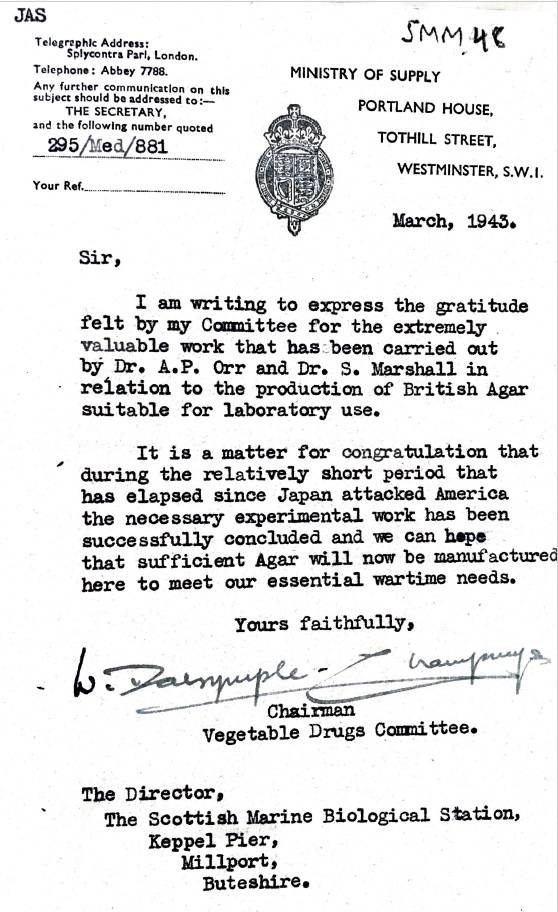Seaweed at SAMS in wartime and today!
Image courtesy of SAMS
Seaweed at SAMS in wartime and today!
The Scottish Association for Marine Science (SAMS) has a long history of seaweed research. When undertaking a history project during lockdown an exciting collection of around 100 wartime letters between the Government in London and the Director of the Marine Station in Millport – a precursor to SAMS - were discovered!
In the early days of the war our scientific staff began to look for ways to help the war effort. With Japan on the enemy’s side, there was a shortage of bacteriological agar. Agar was vitally important for food, medical procedures and vaccinations. Dr A P Orr and Miss Sheina Marshall looked for suitable local seaweeds which would provide a gel so that British agar could be produced. Eventually a red seaweed called Gigartina stellata was identified around Millport.
Survey work was undertaken and in 1942 most of the shores of the Firth of Clyde were surveyed. In 1943 seaweed surveys were extended around many of the west coast islands.
We have a couple of fantastic letters - a local boy scout group was asked to help collect seaweed - but a favourite is from the chairman of the Ministry of Supply congratulating the scientists for their contribution to the war effort. After the war, demand for British agar largely ceased although some was used in food production.
Today seaweed research continues at SAMS with two research seaweed farms supporting industry. We are also expanding our seaweed nursery which will fulfil the growing demand of high-quality starting material to seaweed farms for years to come.
Contributed by The Scottish Association for Marine Science (SAMS)
More information on visiting the area can be found here.
